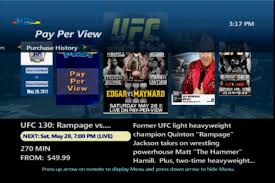E4 is a publicly owned corporation whose board is appointed by OFCOM, this is in agreement with the secretary of state for culture, media and sport.

How long have E4 existed?:
E4 has existed since the 18th of January 2001, so it has been running for over 14 years and is nearing its 15th year and is still going strong.
Here is one of the earliest idents from E4, going all the way back to 2001:
What programmes are shown regularly on E4?:
E4 tend to show different, unique shows in which are abit different to usual television, whether this be obscure comedies or intense, different dramas in which you would never see on the main channel that is Channel 4, an example of one of these comedies would be: The Big Bang theory, a comedy in which focuses on some nerdy scientists in America and their attempts at making discoveries and fitting in to modern society, an example of the obscure dramas on E4 would be: Skins which has a darker tone to it than the shows which are usually seen on the channel.
Here is a clip from Skins:
Who is the target audience for E4?:
The target audience for E4 is predominantly 16-24 year olds, so late teens and young adults, this is quite evident in the content and shows they put out aswell as most of them focus around themes and humour in which people from these age ranges may be interested in, also, a lot of the shows they use are focused on late teens and young adults so they have a direct connection with the viewers.
Here is E4's demographic viewership from 2013:
Who is the secondary target audience for E4?:
E4's secondary audience is 25-34 year olds, these are the viewers who view the content the second most out of the other viewers who watch E4 as can be seen from the graphic above this point.
E4's sister channels:
Channel 4 - Aimed at adults with their adult content
Film4 - Aimed at differing audiences depending on what movies are on at that time.
More4 - Lifestyle shows aimed at full time Mothers
4music - Pop music channel aimed at Teenagers and Young Adults
Heat - Also aimed at Teenagers and young adults as it focuses on Pop Culture
Kiss TV - Another channel aimed at Teenagers and Young adults due to pop-culture
Magic - Aimed at middle aged adults as it plays smooth, easy to listen to music
Smash Hits - Another pop-culture heavy channel aimed at Teenagers and young adults
The Box - Yet another pop-culture heavy channel
4seven - Replays channel 4 shows so that they can be re-watched, also aimed at adults
What is an ESting and what's its purpose?:
An ESting is an animated short in which must be 10 seconds long and include some affiliation to the E4 channel brand, the aim of the shorts is to be played inbetween adverts and get across the E4 brand in the unique way in which the whole channel is based upon, they are fun, unique and fast paced which keeps the viewer engaged and the music which is used on them shows this with the catchy jingles in which alert the viewer to them instantly with the noises in which are used.
An example of an E4 Sting and the music in which is used for it:
Analysing pre made EStings:
ESting 1 - Infinite Self-E
This Sting is clearly aimed at the audience of Teenagers/Young adults, this is due to the fact that it uses the newly found trend: Selfies, a trend in which is most common with the younger generations, the content is of a nature in which it can be viewed by anyone of any age as it features no violence or mature content, in actual fact it could be viewed and enjoyed by toddlers due to its bright colours and friendly nature. The genre is a casual one as nothing 'amazing' as such occurs but what happens is very interesting to watch as it keeps the viewer engaged.
In this Sting I like the fact that the head transitions into a different body, it suits the backing music and the nature of what an ESting should be all about.
ESting 2 - Grabbing a drink.
This Sting is hard to find exactly what audience it is aimed at due to it literally being someone pouring a drink on paper, you would have to say that once again the target audience is young adults/teenagers, simply due to the fact that, that is what E4's whole channel is aimed at, however, there isn't anything specific in this Sting that happens to state that it is aimed at them audiences specifically, this is another Sting which will be of a casual nature as nothing mature or violent happens so once again could be viewed by anyone of any age.
I like how the transitions of the cup are used in this one due to their unique style and intense movements, it helps to make the Sting more than just a hand have an empty glass filled.
ESting 3 - Zombie Hand
This Sting is of the Horror genre due to the haunted house being used and the zombie hand popping out of a grave, both of which are staples in the horror movie genre, furthermore the dark colours (other than the E4 logo) are clear to be seen, the audience is of late Teens due to them being the most common viewers of the horror genre.
I like how the E4 logo is incorporated in this due to it standing out really well with the bright purple colour on the background of the dark colours.
In terms of planning to respond to the brief we've been given I have put in place ways of implementing ideas so that they will be short and snappy as I will only have 10 seconds to work with and need to be exact and any 1 shot taking too long/ too short would cause the whole project to collapse, so therefore every single shot has to be executed perfectly for the correct amount of time. To do this so that it corresponds correctly I have drawn to 1 idea in which will be fun and fast of a bomb detonating into the E4 logo, this is due to it being able to be done quickly and exact with with the time being shown on the bomb, and also fitting the ESting brand as the logo pops up, furthermore I have been looking at the available sounds as only being able to work with the E4 ones you don't have a large pool of jingles to choose one so I need to pick one that will suit the tone of a bomb explosion.
For my ESting I have opted for both a stop motion animation and a claymation animation for the time bomb we will use stop motion animation for a man tripping over a wire and igniting a time-bomb this bomb will then be animating in a countdown of 5 using claymation animation, this will add an extra element to the animation I feel will work effectively and in turn run smoothly and effectively throughout, furthermore, they will both be able to edit seamlessly and flow as if they were in one, which is key to do within a stop-motion animation.










 George Pal (1979)
George Pal (1979)






